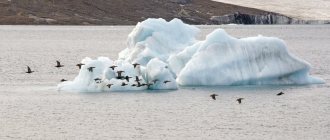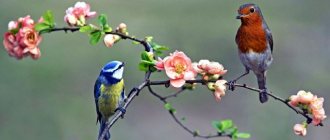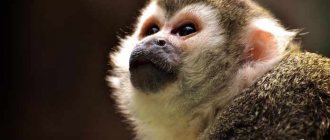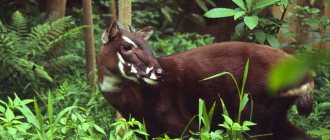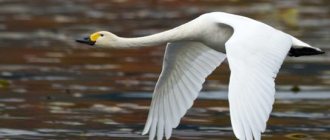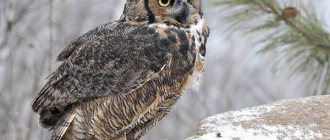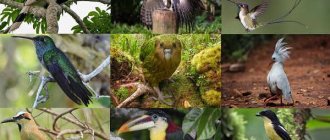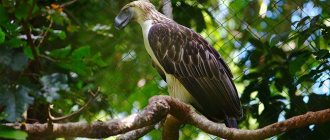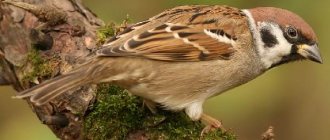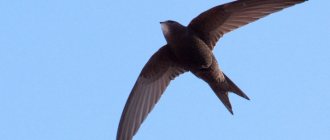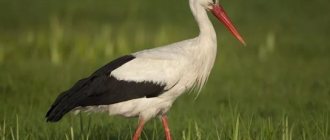The boundless nature of the tundra is distinguished by its harsh beauty. These areas are dominated by low-growing perennial grasses, lichens and mosses. A distinctive feature of this nature is the absence of forests due to strong winds and low temperatures. The climate of the tundra is quite harsh, with long winters and very short summers. Polar nights are common in the tundra, and snow lies for more than six months. Despite this, the nature of the tundra is inhabited by some species of animals that have adapted to the characteristics of these territories.
White-billed loon
Photo source: Mark Peck/flicr
White-billed loons are the largest waterfowl. In appearance they resemble geese. Males are larger than females and their body length can reach up to 1 m. The wingspan of this bird is on average 150 cm. The main habitat is the coast of the Barents and White Seas. Often found in Novaya Zemlya and northern Canada.
The nesting grounds of loons are located in the Arctic tundra (on the mainland coast of northern Russia). White-billed loons build nests from arctic grasses near freshwater lakes. For the winter they fly to the north of Norway, to Sakhalin and the Kuril Islands. The Canadian population winters in southern Alaska and California.
2
Plover
12457
In summer, the ptarmigan is joined throughout the tundra by the golden plover. This bird, in its own way, is also a faithful child of the tundra; True, for the winter she flies south, to warmer countries, but with the first rays of spring she already flies to the tundra to spend the whole summer here and hatch and raise her chicks. The plover's feathers are a wonderful golden color with green tips. In her clothes, with all her diversity, only the colors of the tundra are combined, and her cry, a sad, drawn-out cry, sweeping over the tundra day and night, evokes the same sadness as the tundra itself.
But, despite its sad cry, the plover is a very cheerful, lively bird, it quickly runs along the ground on its high legs, catches mosquitoes, stops for a minute, rests and runs again, or slowly walks through the swamp and looks for various worms and larvae in the mud ; She often swallows small pebbles for digestion.
The plover has eaten its fill and quickly runs to drink from the nearest puddle, bathes, and washes its feathers.
So she rose into the air and flew, deftly, quickly, beautifully; Near its nest, the plover loves to perform various tricks in the air, beautifully turns in one direction or the other, and bathes in the blue sky.
The plover is a very sociable bird, it lives very peacefully with its companions, they never quarrel or squabble, although they live very closely, making their nests close to one another. In spring, all the swamps of the tundra are full of these birds sitting on their nests.
For the nest, there is a small hole dug by the female plover, in which only a few blades of grass are placed instead of bedding. Chicks leave the nest as soon as they hatch from the eggs, and are born with the innate ability to hide and escape in case of danger. While the chicks are not yet grown up, the mother and father touchingly take care of them and forget all caution when it comes to saving them. And danger surrounds them on all sides; falcons continually carry adult chicks, and arctic foxes, wolverines, owls, buzzards, crows and gulls carry plover eggs and their small chicks.
At the end of September, plovers gather in large flocks and fly south to warm countries. They fly more at night, high, high, forming a wedge, like cranes. During the day, the flock comes down to rest on the ground, somewhere in the field, to look for food, and if the weather is warm, sometimes it stays here for the whole winter.
Ptarmigan
This small, well-fed bird lives in the mountainous areas of the coastal regions of the planet's Arctic Circle. This unique northern resident does not leave her habitat even in winter. Snow-white winter plumage helps to hide from predators against the backdrop of endless snow.
In summer, partridges acquire a protective mottled brown coloration. Partridge eggs have the same color. Ptarmigans feed on berries, seeds and leaves of local plants in summer, and seeds and tree buds in winter. For most of the winter polar day, birds hide under the snow.
3
Peregrine Falcon
The Peregrine Falcon is the fastest predator among birds. Its flight speed can reach the speed of a Boeing during takeoff - up to 320 km/h. It lives on all continents except Antarctica.
It nests in the Arctic, and for the winter goes to areas with a temperate or subtropical climate. Some populations can easily migrate to the southern half of the planet. The peregrine falcon nests in the same place. Their prey includes small birds, rodents and bats.
Sandpiper (Arctic Sandpiper)
This small, sharp-beaked, motley bird from the snipe family lives on the coast of the island of the Arctic Ocean, in the tundra of Eurasia and North America. It nests in dry rocky places. Waders living in northern Canada migrate to Great Britain, Iceland, and North Carolina (USA). European inhabitants migrate to warmer neighboring areas, close to nesting sites.
5
Birds of the tundra
Birds of the tundra and Arctic have adapted to cold climate conditions. In addition, there is no diversity of vegetation here, only small shrubs, some types of grasses, lichens and mosses.
In the tundra there are:
Gull
Ussuri crane
polar owl
phalarope
Brown-winged Plover
Red-throated loon
A small 45 centimeter loon with coffee plumage on the back, a white belly and a red spot on the chest is called the Red-throated. She is the smallest of the loon family. It dives and swims beautifully and looks like a duck.
The red-throated loon nests in rivers and lakes of the Arctic tundra. Before the onset of winter, they gather in huge flocks and migrate to the coasts of the Atlantic, North, Black, Caspian and Bering seas. They feed on small crustaceans and mollusks.
6
snow goose
The snow-white winter plumage of this goose is magnificent. The black tips of the wings look impressive in flight. In summer, the goose molts and acquires a blue-gray plumage color, only the head and neck remain white.
Snow geese gather in large flocks and nest on the Arctic coast of North America. Sometimes found on the eastern outskirts of Kamchatka, on the coast of the Bering Strait. They migrate to Mexico, flying over the entire territory of the United States and Canada.
Also on most-beauty there is a fascinating article about the most beautiful ducks on our planet.
7
Kamensharka
A small 24-centimeter bird from the snipe family lives in the polar regions of Europe and North America. It has beautiful motley brown-black plumage on the back and white on the belly. Its name comes from the habit of turning over pebbles in search of food (insects, shellfish, small fish). This is a migratory bird, migrating at the beginning of winter to Africa, Europe, South Asia and the Pacific coast.
8
Mammals
Arctic fox (polar fox)
This animal is often called the polar fox. This is a monogamous predatory animal that lives in a family for the period of raising offspring, and then alone. The animal's white fur provides excellent camouflage in the snowy tundra. The common arctic fox is an omnivore, eating both plant and animal food.
Reindeer
A powerful animal adapted for life in the cold, long winter. It has thick fur and large branched antlers, which the deer changes annually. They live in herds and roam the tundra. In winter, the deer’s diet most often consists of moss lichen; such meager food forces the animal to seek sea water to replenish its mineral reserves. Deer loves grass, berries and mushrooms.
Lemming
Famous small rodents of the tundra that feed on most carnivorous animals. The rodent loves leaves, seeds and roots of trees. This animal does not hibernate in winter, so it specially hides food reserves in the summer and digs them up in the winter. If there is not enough food, rodents have to organize a mass relocation to another territory. Lemmings are very prolific.
Muskox
A unique animal resembling in appearance both bulls and sheep. In Russia, these animals live in nature reserves and are protected. The animal has long and thick hair. Musk oxen see well at night and can find food deep under the snow. They live in herds, the main enemies of the animal are the wolf and the polar bear.
Gopher
A fluffy small animal with short front legs, which are endowed with sharp claws. Most gophers store food. The cheek pouches help them well in this matter. You can recognize a gopher by a certain whistle with which the animals communicate.
polar Wolf
A subspecies of the common wolf, it is distinguished by white or almost white fur. They live in flocks and are able to travel long distances in search of food. Polar wolves can chase prey at speeds of up to 60 km per hour. They often hunt musk oxen and hares.
Wolverine
Ermine
It is classified as a predator, although at first glance it is a very sweet and kind animal. It has a long body and short legs; in winter it becomes snow-white in color. The stoat feeds on rodents and can also eat eggs, fish and even hares. The animal is included in the Red Book, as it has always been valuable for fur hunters.
Arctic hare
The largest among its brothers. In winter, the polar hare is white in color and feeds on branches and tree bark; in summer it loves grass and legumes. In one summer, a female can bring 2-3 litters.
Polar bear
The polar bear's comfortable life in the Arctic is ensured by its fur, which is equipped with a thick undercoat that can retain heat for a long time and also prevents solar radiation. Thanks to his 11 centimeter body fat, he can store a lot of energy.
Brown bear
Red (common) fox
They live in the tundra, where they feed on small animals like lemmings, but when the situation is convenient, they do not hesitate to hunt other prey. Hares are rarely caught, as they are quite difficult to catch due to the evolved species, but bird eggs or the chicks themselves often become the target of a hungry predator. These mammals live near large rivers or other bodies of water; during the spawning season they feed on salmon or other fish that die during spawning. If necessary, they can also eat insects if food is absent for too long. In extreme cases, the fox can also snack on carrion. But these predators also need plant food, without which they will die quite quickly. This is due to the fact that in tundra zones there are not many vitamin-rich fruits, so some useful substances may not be present in the diet of foxes. This deficiency is compensated by eating berries or plant shoots.
bighorn sheep
A muscular animal of not the largest size, one of the representatives of the genus of sheep, belonging to the order of artiodactyls. It has a small head on which small ears are located, the neck is not particularly long, and is itself quite short. The horns have a peculiar relief; they are curved, which allows them to scare away larger animals with just their appearance. They narrow towards the end of the horns, can bend slightly to the sides, and closer to the base they become denser and thicker. The habitat of bighorn sheep can be considered mountainous areas of the tundra, provided that the snow cover in them does not exceed forty centimeters in height, but these animals are not comfortable with a large crust of crust. They mainly live in Eastern Siberia, where there are several pockets where all populations of this mammal live.
Caribou
The main difference between this animal and ordinary reindeer is that the caribou’s habitat is in North America, which is quite far from the range of its fellow animal, whose habitat is considered to be the tundra zones of Eurasia. It does not have any external or internal differences from another species, if you do not take into account the fact that caribou is the name of a reindeer that lives in the wild, when an ordinary reindeer can be tamed. Many years ago, a huge number of countless herds of these mammals roamed the American part of the continent, but due to the arrival of the colonialists, their numbers suffered. There are three main species of caribou in the North American tundra: the Peary Caribou, the Granta Caribou, and the caribou that lives in Greenland, the Greenland Caribou.
Bunochka
This is a popular fairy-tale character among all northern peoples. The small, sparrow-like northern bunting, Bunting, lives on the rocky beaches of lakes and rivers in the Arctic tundra. Its second name is Snow Plantain.
Arctic researchers noted her arrival on an ice floe near the North Pole. It can be found in Alaska, Greenland, and the north of the Eurasian continent. It has a very beautiful delicate plumage that changes from winter to summer. In summer it is darker, in winter it becomes lighter, the head becomes brown, and the beak becomes orange. This makes it less noticeable in thawed areas with brown grass.
Males tolerate arctic frosts well and can stay at home for the winter; females return from wintering a month later than males.
9
Birds
polar owl
The largest bird of the tundra is the white owl. The wingspan of this northern resident reaches one and a half meters. The plumage is thick, even covering the beak, and on the legs it forms peculiar tufts. They can be found throughout the tundra.
They live and nest in open areas, however, they hunt only away from nesting areas. Other species of birds take advantage of this and try to build their nests closer to the owls, who only drive away dangerous predators like the Arctic fox from their nesting territories. Owls are pure predators; they hunt rodents, small birds, hares, and sometimes find and eat fish and carrion. In nature, the average survival age of an owl is nine years; in captivity, it is three times longer.
Ptarmigan
The northernmost representative of the Galliformes order. These are small birds, weighing about half a kilogram. Males and females practically do not differ in plumage, the former are slightly larger and more colorful in the summer. In winter, the plumage changes to white and is especially thick on the legs.
They prefer to live in bushes, where they find their food. Not fans of flying, they take off in case of danger and during seasonal flights.
During breeding they live in pairs, in winter in groups of up to 12 animals, and during migrations they unite in gatherings of up to 300 individuals.
More than a hundred years ago, people in Russia loved partridge meat, which cannot be said about the present time. These birds live very poorly in captivity, so other species of Galliformes are used for breeding.
Bunochka
The snow bunting or snow plantain is a small tundra bird, no more than sixteen centimeters long. The color of females and males is different; the latter have more contrasting plumage, which changes with the onset of winter. Even the beak, instead of black, turns yellow. The diet of these birds also depends on the time of year: in summer it is various insects, in winter it is cereals and seeds. Like owls, snow buntings nest on the ground, with an average of five chicks per brood.
Of course, the fauna of the endless Tundra is not limited to the representatives described above. Animals from the Arctic zone also winter in the Tundra, and animals from the southern regions wander in in the summer.
And some species may not even have been discovered by scientists yet...
wild animals, tundra
Arctic tern
The most ambitious and long-distance flights from Antarctica to Antarctica are carried out by the small tern. Its nesting grounds are located on the coast of the Arctic seas. At the beginning of winter, it flies to the shores of the southernmost continent. The editors of most-beauty are simply amazed by this fact!
It takes a lot of effort for birds to get to the southern hemisphere. Migration routes run along Africa, stopping places depend on the availability of food. After wintering, the tern gathers back. Thus, she is constantly in the summer season. As a result, its annual journey reaches 70 thousand kilometers. Each flight takes about a month. This strong migratory bird is considered the record holder among all birds for flight distance.
10
White or Polar Owl
Our list ends with the largest owl among all tundra owls. It has impeccable snow-white plumage interspersed with small dark spots. Lives on the islands of the Arctic Ocean closest to the mainland, in the tundra of Eurasia and North America.
It builds nests with the first rays of the Arctic sun - in March or April. Hunts at night for small rodents (lemmings), small birds, hares, and does not disdain carrion and fish. It flies to its wintering grounds in the fall and spends the winter near its main habitat. The white owl has a large round head and bright yellow round eyes. The female is larger than the male, her wingspan can reach up to 160 cm.
11
Predators
Arctic fox
Arctic fox is the second name for the arctic fox, and for good reason: the arctic fox belongs to the genus of foxes, which includes red and black-brown “cunning” representatives. The Arctic fox has a stockier body, short round ears and a shortened muzzle. This appearance allows them to survive in the harsh tundra climate.
The Arctic fox is omnivorous: they love lemmings, attack stray fawns, do not disdain carrion and fish, and readily eat berries and algae.
Arctic foxes form and live in large families, consisting of a pair of male and female, young one-year-old females and cubs. The male takes an active part in feeding the cubs.
Wolf
Wolves are well-known predators with the widest habitat. A tundra subspecies of wolf stands out - with long, thick and light hair. Their population is almost directly dependent on the distribution of reindeer, which constitute almost their only source of food in the winter. In summer, wolves hunt white hares, lemmings, and bighorn sheep in the mountainous areas.
Dead end
Puffins are colored like penguins, but they have a colorful beak, leading some to dub them "sea parrots." In winter, the beak turns dull gray, and in the spring, during the mating season, it blooms again. Puffins live on the coasts of the Atlantic and Arctic Oceans. They can be found not only in Arctic latitudes, but also in northern Africa, Europe, and North America. Puffins have even been seen over the Arctic Ocean inside the Arctic Circle.
So our short list has come to an end. The editors of most-beauty.ru ask you to write in the comments which beautiful Arctic birds made the greatest impression on you.
New in blogs
Birds
Loons . These are large birds (about the size of a duck or goose); they are not difficult to recognize - their webbed feet are far away
moved back, and the straight, sharp beak looks like a dagger. Two species of loons nest on the lakes of the region: black-throated and red-throated. The first loon lives on large and deep lakes, the second prefers small swampy lakes, of which there are many in the tundra. The black-throated loon arrives very early, when the ice holes on the lakes have just thawed, and the red-throated loon arrives only after the lakes have opened up.
Loons usually nest on islands, on the side where the shore is protected from large waves. The nest is made on a low bank, no further than 1-2 meters from the water. A complete clutch consists of 2 eggs, very large, with a dark gray-green shell. The chicks hatch in early July and quickly leave the nest. The loon feeds and raises its chicks almost exclusively on fish. Loons fly away very late, just before freeze-up. Loon meat smells strongly of fish. And from its skins you can sew various fur products.
Cormorant . On the Murmansk coast there are two types of cormorants - long-nosed and great. Cormorants are large seaside birds, weighing 2-2.5 kilograms, with black plumage. The cormorant's head is small, with a straight, thin beak curved at the end with a hook. It feeds on fish, nests on steep rocky shores and lays 2 to 5 light blue eggs.
These birds are skilled divers; under water they can catch up with even fast-swimming fish.
The guillemot is thick-billed and thin-billed (weight up to 700 grams). These are our most numerous birds. These are what the bird colonies on the Barents Sea coast mainly consist of. The head and upper body of the guillemot are almost black, and the underside is white. Guillemots winter at sea, migrating south along the coast of Norway. In the spring, they appear at bazaars and lay one egg at a time, and they do not build nests, but lay the egg directly on the stone cornice. The eggs, green, with light and dark spots, have a pointed shape, so that when pushed they do not roll off the eaves. The chicks remain on the rocks until they fully fledge and grow to half the size of an adult bird. After this they go down to the sea. Guillemots feed on small fish and feed their chicks with them.
Chistik . This bird lives in bazaars, but nests in rock cracks and between stones, laying two eggs. It is much smaller than the guillemot. The summer plumage of the guillemot is completely black, with a greenish metallic sheen and a white speculum on the wing; winter - dirty gray. The guillemot eats and feeds its chicks with fish, and less often with marine crustaceans. Egg laying begins in the first half of June, the chicks hatch in July, and go to the water in August. Guillemots are loyal to the Murmansk shores and stay here all winter.
Auk . In color and size, this bird resembles a guillemot, but differs from it in its wide beak. The auk nests on rocks, often among guillemots, but sometimes forms separate bazaars. It appears off the coast in April, and lays eggs at the end of May in small depressions on stones and rocks. The auk lines the nest with pieces of peat or dry plants. The chicks hatch in mid-July and descend into the sea in August. Auks eat and raise their chicks with small fish. In winter they wander into the sea, not far from the coast.
Dead end . This bird nests on the coast of Murman and many adjacent islands. It differs from other market birds in that for nesting it digs a long hole (up to 15 meters) in a layer of peat, ending with a widening where the nest is placed. The puffin digs a hole with its flat beak and rake out the soil with its paws.
In early June, the female puffin lays one whitish egg with purple streaks. The chicks hatch in early July and leave their burrows after 39–46 days. Before starting real bird life, the chick walks from the hole to the sea. In winter, puffins migrate to the sea. Like other market birds, they feed on fish.
Whooper swan . This is the largest bird in our region. It has a yellow and black beak and a straight neck.
Swans arrive in early April and stay on rapid, non-freezing rivers. They nest in mid-June in small lakes surrounded by marshy swamps. Swans build a high, up to 70 centimeters, nest from pieces of peat. There are 2-5 eggs in a clutch.
Broods of swans meet from the first days of July. At the same time, adult birds molt and lose the ability to fly for a while. Swans feed on aquatic and coastal vegetation. They depart at the end of September.
Swans are too rare and hunting them is prohibited throughout the Soviet Union.
Bean goose . This bird, reaching a weight of 4.5 kilograms, in the Murmansk region nests on tundra lakes, and occasionally in forest belts.
The gooseberry can be recognized by its beak, which is black with a yellow belt. The geese arrive in early May and first stay in the polynyas, then migrate to small marshy lakes and soon begin laying eggs. The chicks begin to fly in August. Geese are herbivorous birds, but they also readily feed on cloudberries and crowberries. Their departure occurs in October.
Lesser white-fronted goose . This relatively large bird (its weight is 1.5-2.5 kilograms) lives in the tundra of the Kola Peninsula, but is also found in flight in the forest zone. The goose's nest is a small hole lined with grass and down. Usually it contains 4-6 eggs. The white-fronted goose arrives at the nesting sites in May - early June, and flies away in September. Winters in China, India, the Caspian Sea and the Black Sea.
Teal-whistle . The teal is one of the most common ducks in the area. You will meet it in the summer both in the forest belt and in the tundra. It arrives in May and first stays in the polynyas. As soon as rivers and small lakes open up, the whistle moves to them. The teal makes its nest in coastal thickets, and sometimes in the forest, from twigs and grass. The teal lines its bottom with a thick layer of down and feathers and lays 7-12 eggs. Ducklings are born at the end of June, and at the beginning of August they already begin to fly.
Teal feed on plant seeds, insect larvae, worms and snails, and everything they can find in the water.
They fly away early and winter in northwestern Europe. Of the 8 teals ringed by the Lapland Nature Reserve on June 25, 1960, one was killed on September 6 south of Stockholm, and the other on October 5 of the same year in North Holland.
Mallard . This large duck flies to the Murmansk region in mid-May, at the opening of the rivers, and at first stays in pairs along forest rivers and small lakes. The drake is very beautiful in its breeding plumage: a dark head with a greenish-blue tint, a white collar, a chestnut chest, a rowan-gray back, light gray wings with a bright violet-blue mirror, tail coverts are glossy black.
The female makes a nest on the shore under some kind of shelter, lining it with grass and down. The first broods appear at the end of June, and in August young mallards begin to fly.
The mallard feeds on grass and sedge seeds, as well as all kinds of invertebrates that it finds in shallow water. The female and young fly away in September, and the males even earlier, in the summer.
Pintail is a tundra duck. In its lifestyle it is similar to the mallard, but is slightly smaller and has a long neck and a sharp tail. Pintails dive better than other ducks. Their meat is very tasty.
Wigeon lives in both forest and tundra zones. Like teal, this duck most often chooses rivers and lakes overgrown with coastal vegetation. Arrives in May and immediately begins laying eggs. The wigeon makes its nest on a dry bank under cover, sometimes far from water, even in a reindeer forest. She carefully places 5-7 white eggs on a bed of fluff and grass. The chicks hatch at the end of June and begin to fly in August. The wigeon feeds on plants, aquatic invertebrates, and berries. Flies in September. The wigeon winters in Western Europe, North Africa, and South Asia.
All 4 types of ducks described above are called river or noble.
We also have diving ducks.
Sea and tufted duck (weight about 1 kilogram). Both of these species nest in the tundra and very rarely on lakes in the forest belt. They arrive in late May - early June. A nest of 7-9 eggs is made near the water, abundantly lined with dark down. It flies away to turn black just before the lakes freeze.
The long-tailed duck nests in the tundra on fresh lakes, and the rest of the time it lives in coastal areas of the sea. In summer, flocks of long-tailed ducks can often be seen on large forest lakes. Long-tailed duck nests are not easy to spot. This is a fairly deep hole under some kind of shelter. The long-tailed duck lines the nest with dry grass and down and lays 6-7 eggs. Arrives in May - early June, and flies away just before freeze-up.
Gogol . You will find this duck on every forest lake. It is also found in the forest-tundra. Goldeneyes arrive earlier than other ducks, even before ice breaks up, and at this time they stay in pairs along non-freezing sections of rivers. The goldeneye nests in hollows or artificial nests, which are hung by caring hunters. Sometimes full clutches of 7-12 eggs are found as early as mid-May. The first broods appear on the water in mid-June. Males gather in flocks at this time and fly away at the end of June. The young fledgling in August, train in flocks and fly away in October. Goldeneyes feed mainly on invertebrates, sometimes fish or frogs.
The spring outfit of the drake is very beautiful: a black head with a greenish tint, a white spot on the cheek and a white mirror on the wings; upper body black. In summer, ducks and drakes are colored differently: the head is brown, the crop is gray, the sides are smoky, the back is dark brown.
Singa . This large, dark-colored duck nests in lakes throughout the Murmansk region. She arrives later than other ducks. It feeds on crustaceans, mollusks and plant matter. After molting, males immediately fly off to their wintering grounds. Females and young ones stay until freeze-up.
Turpan . The scoter is similar in lifestyle and appearance to the blue scoter and differs from it only in a small white mirror on the wing.
Common eider (weight 2-2.5 kilograms). This bird is distributed along the entire coast of the Kola Peninsula. Eider is valuable for its exceptional quality down. This is the warmest and lightest of all the downs of birds or mammals on the globe.
Eider nests in colonies, sometimes several hundred in one place. The clutch begins in June or late May and consists of 5-8 eggs. The hatched chicks immediately follow their mother into the sea. The eider eats mollusks and crustaceans.
Mergansers . This group of ducks differs from all others in having a narrow, elongated beak with hard teeth along the edges. Mergansers use it to reliably capture slippery fish. In the Murmansk region there are three species of mergansers - large, long-nosed and lutok.
Great merganser (larger than mallard). Lives mainly along rivers, sometimes nesting in hollows. The longnose is smaller in size, lives on lakes and makes its nest on the shore, under the cover of a dense fir tree or juniper bush. The heads of male mergansers are black with long feathers on the back of the head, the rest of the plumage is white and black, the beak and legs are orange. Lutok is the smallest of the mergansers. The male has almost the entire head white, and the beak and paws are gray. Loots nest in tree hollows.
Sokol . Of this species of birds, the gyrfalcon, peregrine falcon, merlin and kestrel are found in our region. All of them are migratory birds, only the gyrfalcon sometimes winters on the peninsula.
Falcons nest on the ground, on rocks or in trees. They lay 3-5 eggs.
Falcons catch prey in flight, swooping down on it from above. Their flight speed is high. It happens that a peregrine falcon misses and crashes to the ground to death. Large falcons feed on birds, and small ones (merlin and kestrel) on small birds, voles and insects.
Hawks . There are two species of hawks found on the Kola Peninsula: the goshawk and the sparrowhawk. The main food of the goshawk is upland game, but it also catches small birds, as well as voles. The sparrowhawk is much smaller and primarily hunts songbirds. Hawks nest in trees and lay 4-5 eggs. The sparrowhawk flies away for the winter, but the goshawk lives with us all year round.
Goshawks destroy huge quantities of upland game, as well as hares, squirrels and ducks. It is estimated that a pair of nesting goshawks with chicks eat up to 400 kilograms of game over the summer. These robbers must be shot at any time of the year.
Eagles . There are two known species in our region: the white-tailed eagle and the golden eagle. Both of them fly away for the winter, but return early, in April. They build their huge nests on the tops of pine trees from thick branches. The female lays 2-3 eggs. The chicks, like all other birds of prey, hatch blind and almost naked, then become overgrown with white down, and at the end of July they fledge and leave the nest.
The Eagles menu is varied. These are fish, sometimes very large, ducks, wood grouse and other birds, as well as hares, muskrats, voles. Under the nest of one golden eagle, the remains of three foxes, two martens, an ermine, five hares, a squirrel, a deer calf, a goose, eleven wood grouse and four ptarmigan were found. If carrion can be found in winter, golden eagles remain for the winter.
Buzzard . This is the most common of our birds of prey; it lives both in the forest and in the tundra. It feeds almost exclusively on voles, and therefore the number of Buzzards varies greatly depending on the “mouse” years.
Osprey . It can often be seen above the lake, when it seems to hang in the air in one place, often flapping its wings. Having spotted the prey, it falls into the water like lightning, sometimes completely disappearing into the waves, and takes off with the fish. The osprey makes its nest in the forest at the top of a tree.
Capercaillie . This beauty of our forests lives only in untouched forests and burnt areas where living trees are preserved. In summer it loves spruce forests interspersed with moss swamps, river and stream valleys, and in winter it migrates to forests, where at this time it feeds mainly on pine needles. The wood grouse's summer food consists of green parts of plants, flowers, berries and partly insects.
In winter, wood grouse sleep buried in the snow, and in April they gather in certain places in the forest. The males begin to display. At the beginning of June mating ends; At this time, capercaillie already have full clutches of 5-8 eggs. The wood grouse's nest is a simple one - a shallow hole on the ground with a scant litter of leaves, pine needles and feathers. The chicks hatch at the end of June, well developed, covered with down, and leave the nest within a few hours. Broods stay along the banks of rivers and streams in densely overgrown hollows.
In the fall, wood grouse begin to fly to the shores of reservoirs and swallow pebbles: it helps them grind hard pine needles in their stomachs in winter.
Grouse . Back in the late thirties, the black grouse did not go further north than Imandra, but now it reaches as far as Murmansk. In his progress to the north, he was helped by clearings that covered the entire region, and fires that now occupy vast spaces. In these places, birch growth has developed well, and this is what the black grouse is looking for: catkins and buds of birch trees serve as its main food throughout the long polar winter. In May, the black grouse begin to lek. They usually breed on the ice of lakes or open swamps. Spring frosts and snowfalls sometimes destroy many clutches and broods of chicks. Therefore, the number of grouse can vary greatly.
Hazel grouse . This bird, which is less common among us than others, lives sedentary. In winter, the hazel grouse feeds on the buds and catkins of alder and birch, and in the summer on green parts of plants and berries. Hazel grouse live in pairs, and therefore they do not have such currents as wood grouse or black grouse. The number of eggs in a clutch reaches 12 pieces. When the female is incubating, the male stays close to the nest, and then leads the brood with the female. In autumn, the broods break up, and in winter the hazel grouse stay alone or in pairs.
White and tundra partridges . Of all our birds, only partridges change color for the winter, camouflage themselves, and become white. In summer, the white partridge lives in swamps, mountains and forests, staying in thickets of willow and polar birch. In winter, partridges are found along the banks of rivers and streams, in thickets of willow, the shoots and buds of which serve as their main winter food. Partridges nest in swamps, and their broods also live there.
Tundra partridges live in the mountain tundra. In winter, they roam in flocks and feed on shoots and berries of shrubs, digging them out from under the snow. They nest in reindeer moss or rocky tundra. The tundra partridge wears a white winter outfit longer than the white partridge. This is understandable, because in the tundra the snow lies longer than in the forests.
Waders live in swamps, along the banks of rivers and lakes. All waders arrive in May and fly away in August. They nest on the ground and usually have 4 large eggs in their clutch. After hatching, the chicks leave the nest as soon as they dry out. In total, more than twenty species of waders are found in the region. Tules, golden plover, common plover, redshank, dunlin, sandpiper, white-tailed sandpiper, sandpiper, and round-nosed phalarope live mainly in lowland tundras. Khrustan is typical for mountain tundras. The oystercatcher and the turnstone live on the sea coast. Greater snail, fifi, goldfinch, godwit, snipe, hump and curlew live in the swamps of the forest belt. The carrier and the ringed plover live on the banks of rivers and lakes. Woodcock and great snipe only occasionally fly to the Kola Peninsula.
Skuas . Three species of skuas nest in the tundra along the shores of the Barents Sea: short-tailed, long-tailed and middle-tailed. Shorttails sometimes form colonies. Skuas nest on the ground, laying two eggs at a time, and desperately defend their nest from enemies. By way of life, skuas are predators. They are excellent flyers and often take fish from seagulls, but their main food is lemmings, eggs and chicks of tundra birds.
Seagulls . They live on the seashore and along the shores of large lakes, nesting in flat places, only the kittiwake prefers inaccessible coastal cliffs. The herring gull nests in large colonies in the lowland tundra, on the shores of the sea or lake. Black-billed gull, glaucous gull, and Arctic tern are found on large lakes. Seagulls arrive at nesting sites very early, as soon as the first ice holes open on the lakes, and fly away shortly before freeze-up. All gulls feed on fish, and terns also catch insects.
Cuckoo . The cuckoo is found throughout the forest belt of the region and flies into the forest-tundra. Arrives at the end of May. It lays its eggs in the nests of finches and other songbirds. The cuckoo hatches before the rest of the chicks in the nest and throws its named brothers onto the ground. Foster parents are forced to feed young cuckoos even in August, when they already fly well. In August, cuckoos fly to Africa.
Owls . There are 8 species of owls found in the Murmansk region. Although they are usually considered nocturnal birds, in our country, during the continuous summer day, they also hunt in the sun. The main food of owls are voles and lemmings, but some owls also catch birds. The eagle owl and the snowy owl, for example, are strong enough to cope with the capercaillie. Owls nest on the ground, laying 2-7 white, almost spherical eggs. The short-eared owl is a migratory bird; other owls are sedentary and wander only when there is a lack of food.
The most abundant species in the region is the hawk owl. The rest are less common.
Swift . It nests in pine forests and hollows of pine trees. It arrives late, at the end of June, and flies away at the beginning of August.
Woodpeckers . In the Murmansk region there are 4 species of woodpeckers. Three-toed and black woodpeckers feed on insects and therefore willingly stay in fresh burnt areas with dying trees. Both of them are sedentary. The Lesser Spotted Woodpecker also feeds on insects, but is very rare in the area. The Great Spotted Woodpecker feeds on pine and spruce seeds, which are not harvested every year. We don’t see them in lean years.
Woodpeckers nest in hollows, laying 3-5 eggs. In August, young birds already appear in the forests.
Ravens . Of these birds, 5 species are found in the region. The raven, which lives sedentary both in the forest and in the tundra, builds nests on a rock ledge or tree. The gray crow stays near villages, where it feeds on landfills. The magpie is a forest bird, but it also moves to cities and towns for the winter. The jay is found in forests, but apparently does not nest there, but only flies in. The cuckoo is a common resident bird in the forest zone of the region.
All ravens nest in trees and lay 3 to 5 eggs. They feed on berries, mushrooms, plant seeds, insects, small mammals, birds, and their eggs. The most predatory is the raven, but it also largely feeds on carrion.
Songbirds . In total, 47 species of songbirds nest in the region, mostly in the forest zone. Almost all songbirds are migratory birds.
Lowland and mountain tundras are characterized by the common wheatear, Lapland plantain, snow bunting, horned lark, and meadow pipit. They all fly away for the winter.
The forest is inhabited by redpolls, siskins, and three species of crossbills—spruce, pine, and white-winged. In years rich in food, these birds stay with us all winter; Bullfinch, bee-eater and waxwing fly away for the winter, but not for long. The finch, the chaffinch, and two species of buntings—the reed bunting and the common bunting—fly away for the winter, while the common bunting migrates to the villages.
The great shrike is relatively rare and lives in open places - swamps, burnt areas and woodlands. In summer, many thrushes nest in the forests, especially white-browed thrushes; warblers, fieldfares, and less commonly trees are also found. Forest Pipits and Warblers are numerous, especially the Willow Warbler. Typical forest birds nesting in hollows or behind loose bark of trees are gray and pied flycatchers, redstarts, two species of chickadees (Lapland and black-headed), and great tits. Tits sometimes fly to us - tufted and long-tailed. The smallest of our birds is found here and, apparently, nests.
White wagtail and dipper live on the banks of rivers and streams.
The dipper builds its spherical nest from mosses, on a stone or tree leaning over the water. This sedentary bird is interesting because it can dive and remain underwater for some time. In summer and winter, it feeds on aquatic insects, which it catches at the bottom of streams.
The yellow wagtail lives only in swamps and open meadows. Reed buntings and bluethroats nest in coastal bushes, and shore swallows are occasionally found on steep river banks. Robins, Accentor, Wrens, and even the Siberian Bluetail bird live in remote spruce forests.
The house sparrow, city swallow and starling nest in cities and towns. A skylark nests in the fields.
